Key Takeaways
- The metaverse is an evolving 3D digital ecosystem that combines virtual reality, augmented reality, and other technologies to create immersive experiences beyond traditional internet interactions.
- Major companies like Meta, Microsoft, and gaming platforms are investing billions in metaverse development, each with different visions for its implementation.
- Core technologies powering the metaverse include VR, AR, blockchain, AI, and real-time rendering, which together enable persistent virtual worlds.
- Unlike the 2D internet, the metaverse offers 3D spatial experiences where users can interact with digital environments that continue to exist even when they’re not actively participating.
- Current applications already exist in entertainment, digital commerce, remote work, and education, though widespread adoption faces challenges in hardware limitations and interoperability.
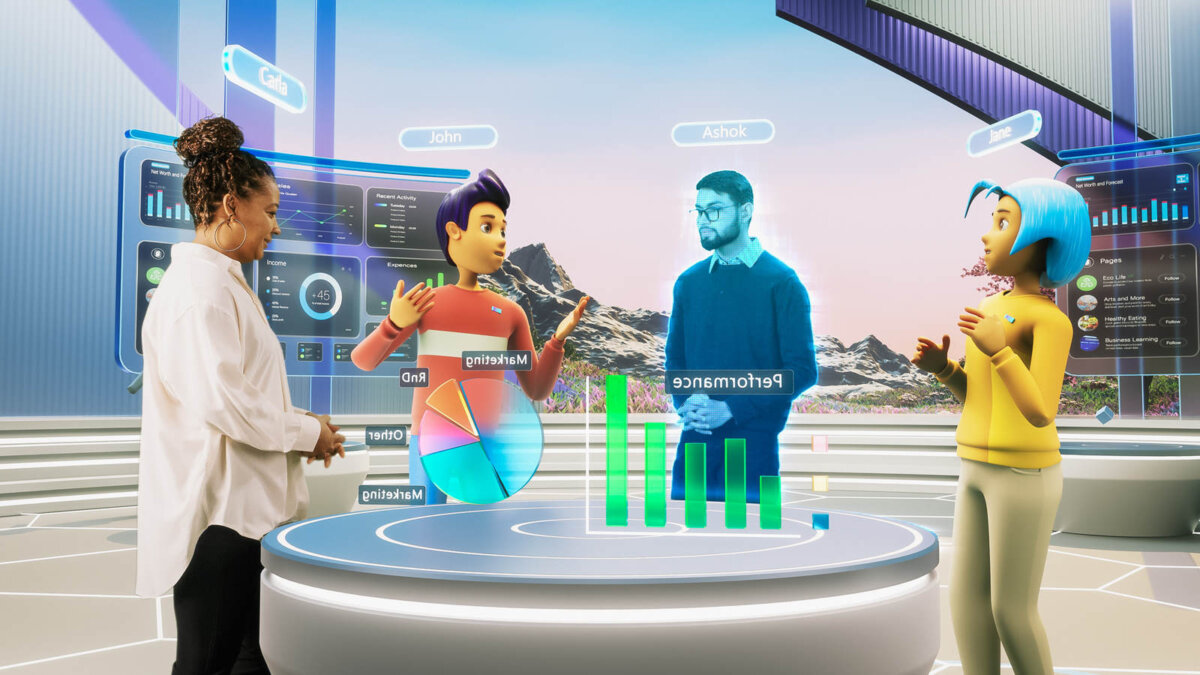
“What is the Metaverse? | TechFinitive” from www.techfinitive.com and used with no modifications.
The metaverse represents the next evolution of our digital existence, moving beyond flat screens into immersive 3D environments where the boundaries between physical and virtual blur. While still developing, this concept is rapidly transforming from science fiction fantasy into technological reality. Understanding the metaverse isn’t just about keeping up with tech trends—it’s about preparing for a fundamental shift in how we work, play, socialize, and experience digital content.
At Market Business Watch, we recognize that the metaverse concept can seem complex and even intimidating. That’s why we’re breaking down what it truly means, how it works, and why it matters to businesses and consumers alike. The potential of this technology goes far beyond gaming headsets and virtual meetups—it represents an entirely new digital frontier with implications across industries.
The Metaverse Explained: More Than Just Virtual Reality
The metaverse is a collective virtual shared space created by the convergence of virtually enhanced physical reality, augmented reality, and internet spaces. It’s where physical and digital realities meet in a persistent, real-time 3D environment. While virtual reality is certainly a component, the metaverse extends far beyond VR headsets to encompass a network of interconnected experiences and environments that continue to exist and evolve even when you’re not there.
Think of the metaverse not as a replacement for the internet but as its spatial evolution. Instead of browsing websites, you’ll navigate through immersive spaces. Rather than clicking on links, you’ll walk through portals. Instead of video calls, you’ll interact with realistic avatars in virtual meeting rooms. The metaverse aims to transform digital interaction from observation to participation.
“The metaverse is an expansive network of persistent, real-time rendered 3D worlds and simulations that support continuity of identity, objects, history, payments, and entitlements, and can be experienced synchronously by an effectively unlimited number of users.” — Matthew Ball, Venture Capitalist and Metaverse Analyst
The Current State vs. Future Vision
Today’s metaverse exists as fragmented platforms rather than a single unified space. We have virtual world games like Roblox and Fortnite, blockchain-based environments like Decentraland and The Sandbox, and corporate platforms like Meta’s Horizon Worlds and Microsoft’s Mesh. These represent early iterations of metaverse concepts, each exploring different aspects of what a fully realized metaverse might include. The experience currently requires specific hardware, has limited interoperability between platforms, and often suffers from technical limitations that break immersion.
For a deeper understanding of how these platforms function, you can explore this comprehensive guide to search engines that power some of these virtual worlds.
Why Big Tech Is Betting Billions
Major technology companies are investing unprecedented amounts into metaverse development because they see it as the next computing platform. Meta (formerly Facebook) rebranded specifically to align with this vision, investing over $10 billion annually in metaverse development. Microsoft’s $68.7 billion acquisition of Activision Blizzard was partially motivated by metaverse strategy. Apple has entered the space with its Vision Pro mixed reality headset, while Google, NVIDIA, and countless startups are developing crucial metaverse infrastructure.
This investment frenzy stems from the understanding that whoever establishes dominant platforms in the metaverse potentially controls the next generation of digital experience. The stakes are enormous: McKinsey estimates the metaverse could generate up to $5 trillion in value by 2030 across gaming, entertainment, education, marketing, and virtually every other industry. For businesses, the metaverse represents not just new markets but entirely new business models.
The technology that will power tomorrow’s metaverse is already being developed and refined today. From advanced VR headsets to artificial intelligence systems that can generate realistic environments on the fly, the building blocks are rapidly taking shape. The question isn’t if the metaverse will become mainstream, but when and how it will transform our digital lives.
Origins of the Metaverse: From Science Fiction to Reality
The concept of the metaverse didn’t emerge from Silicon Valley boardrooms but from the pages of speculative fiction. Long before technology companies were pouring billions into development, authors and filmmakers were exploring the potential of virtual worlds that parallel our own. These creative visions laid important groundwork for how we conceptualize digital reality today.
Neal Stephenson’s Snow Crash: The Original Blueprint
The term “metaverse” itself was coined by science fiction author Neal Stephenson in his 1992 novel “Snow Crash,” where he described an immersive digital world accessed through personal terminals and virtual reality goggles. In Stephenson’s metaverse, users navigated a digital urban environment as avatars, interacting with each other and software agents in a space that functioned as a successor to the internet. What makes this particularly remarkable is how many elements of Stephenson’s fictional concept align with today’s metaverse development, from avatars and digital real estate to the social and economic structures that govern virtual spaces.
How Early Virtual Worlds Shaped Today’s Concept
Before the term metaverse became mainstream, early virtual worlds laid important groundwork for what we now envision. Platforms like Second Life, launched in 2003, created persistent online spaces where users could socialize, create content, buy virtual land, and establish economies with real-world value. These early experiments demonstrated the potential for digital spaces to support complex social and economic interactions beyond simple gaming mechanics.
Massively multiplayer online games (MMOs) like World of Warcraft and EVE Online further developed the concept by creating persistent worlds with complex economies, social structures, and governance systems. The communities that formed within these digital spaces created cultural norms, economic principles, and social hierarchies that exist entirely within virtual contexts but have real-world impacts and parallels. These early communities offered valuable lessons about digital identity, ownership, and governance that inform today’s metaverse development.
Core Technologies Powering the Metaverse
The metaverse isn’t a single technology but rather a convergence of multiple cutting-edge technologies working in concert. This integration of different systems is what distinguishes the metaverse from earlier virtual worlds and creates its potential for transformative impact across industries and daily life.
Virtual Reality (VR): The Immersive Gateway
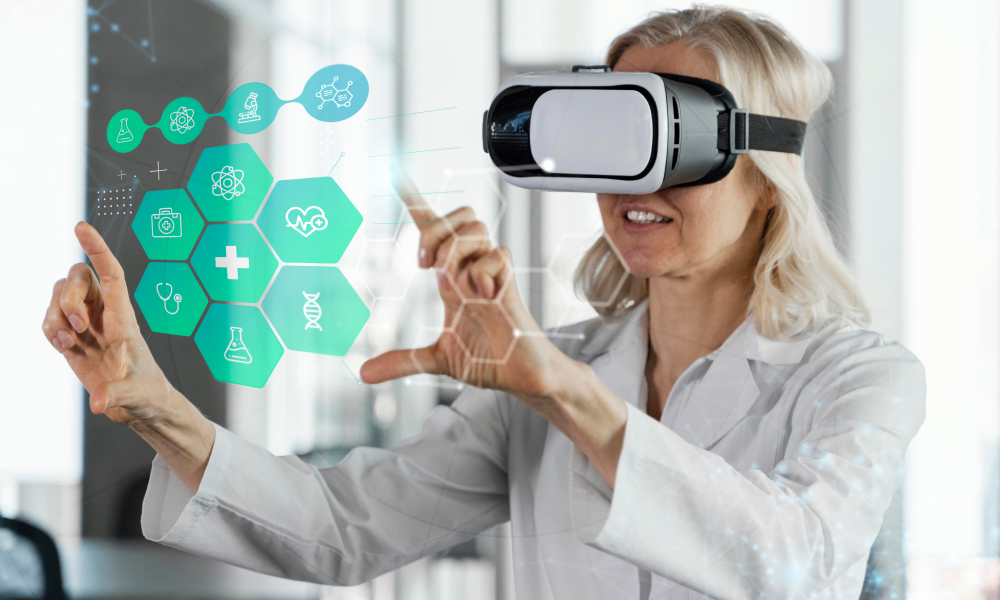
“Virtual Reality Tech in Healthcare …” from www.indianic.com and used with no modifications.
Virtual reality serves as perhaps the most immersive gateway to metaverse experiences, allowing users to be fully surrounded by digital environments. Modern VR headsets like Meta’s Quest series, Valve’s Index, and Sony’s PlayStation VR2 create convincing sensory experiences by tracking head movements and presenting stereoscopic 3D imagery that tricks the brain into perceiving digital space as physical. The technology continues advancing rapidly, with newer headsets offering higher resolution, wider fields of view, and increasingly sophisticated hand tracking to enhance immersion.
The full potential of VR in the metaverse goes beyond visual immersion to include haptic feedback systems that simulate touch, omnidirectional treadmills for natural movement, and even experimental technologies to simulate smell and taste. These sensory components are crucial for creating truly convincing metaverse experiences that engage multiple senses simultaneously, just as the physical world does.
Augmented Reality (AR): Blending Digital and Physical

“What Is Augmented Reality? | PTC” from www.ptc.com and used with no modifications.
While VR creates fully immersive environments, augmented reality overlays digital elements onto the physical world, creating mixed experiences that bridge virtual and physical reality. AR is accessible through smartphones (like Pokémon GO), specialized glasses (Microsoft HoloLens, Magic Leap), and upcoming consumer products like Apple’s Vision Pro. This technology will be crucial for metaverse applications that enhance rather than replace physical environments, from navigation overlays to interactive educational experiences superimposed on real objects.
For more on how technology is evolving, check out our best ChatGPT prompts for marketers.
The long-term vision for AR includes seamless integration into everyday glasses or even contact lenses, making digital overlays a constant, subtle enhancement to physical reality. This could transform everything from shopping (seeing product information overlaid on items) to workplace collaboration (virtual sticky notes attached to physical locations) to entertainment (characters from games appearing in your living room).
Blockchain and Digital Ownership

“What is Blockchain Technology?” from corporatefinanceinstitute.com and used with no modifications.
Blockchain technology provides the infrastructure for true digital ownership and economies within the metaverse. By creating verifiable, immutable records of digital asset ownership, blockchain enables metaverse users to buy, sell, and trade virtual goods with confidence that their ownership rights are secure. This has already manifested in NFT-based virtual land sales in platforms like Decentraland and The Sandbox, where plots have sold for millions of dollars.
Beyond simple ownership, blockchain enables more sophisticated economic activities in the metaverse, including decentralized autonomous organizations (DAOs) that can govern virtual spaces, play-to-earn mechanics that reward participation with cryptocurrency, and interoperable assets that can move between different metaverse platforms. These mechanisms create the foundation for complex economic systems that mirror and extend beyond traditional economic structures.
AI and Real-Time Rendering
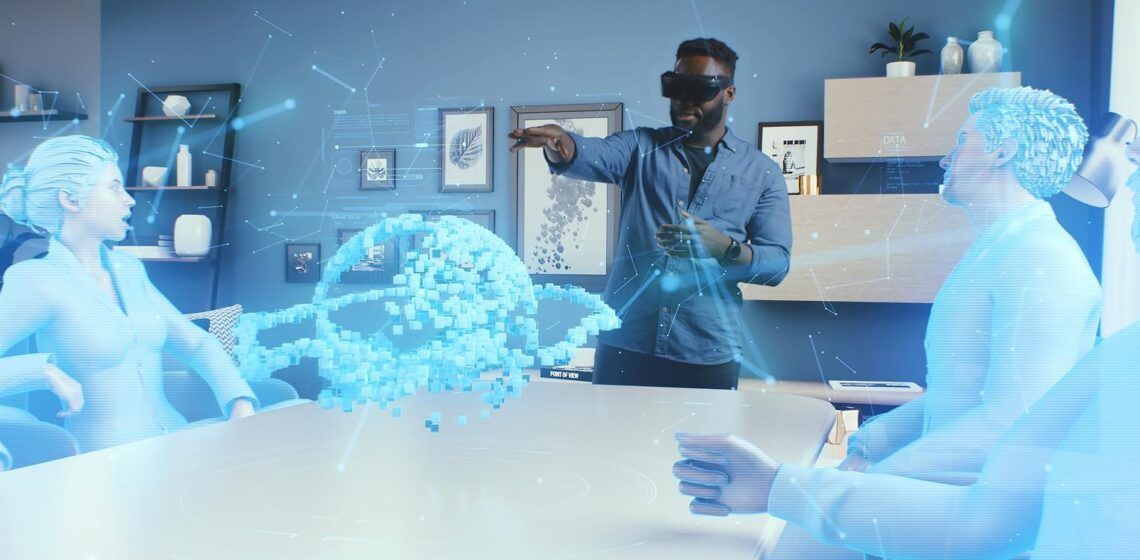
“Exciting Use of Metaverse for 2023 and …” from nttdata-solutions.com and used with no modifications.
Artificial intelligence serves multiple crucial functions in the metaverse, from powering non-player characters that behave realistically to generating dynamic environments that respond to user actions. Advanced AI systems like GPT-4 and deep learning models enable natural language interactions with virtual entities, while computer vision systems help AR applications recognize and respond to the physical world. As these technologies advance, the line between programmed and emergent behavior in virtual environments will continue to blur.
Real-time rendering technologies, meanwhile, create visually convincing 3D environments that can be explored and modified on the fly. Game engines like Unreal Engine 5 and Unity are evolving into general-purpose metaverse development platforms, offering tools for creating everything from photorealistic environments to stylized worlds. The continued advancement of rendering technology, particularly when combined with AI-assisted content generation, is rapidly reducing the resources required to create convincing metaverse experiences.
The Difference Between Internet and Metaverse
To truly understand the metaverse, it’s essential to recognize how it differs from the internet as we know it today. While the internet serves as the underlying technical infrastructure for the metaverse, the experience and interaction models represent a fundamental evolution in how we engage with digital content.
From 2D Browsing to 3D Experience
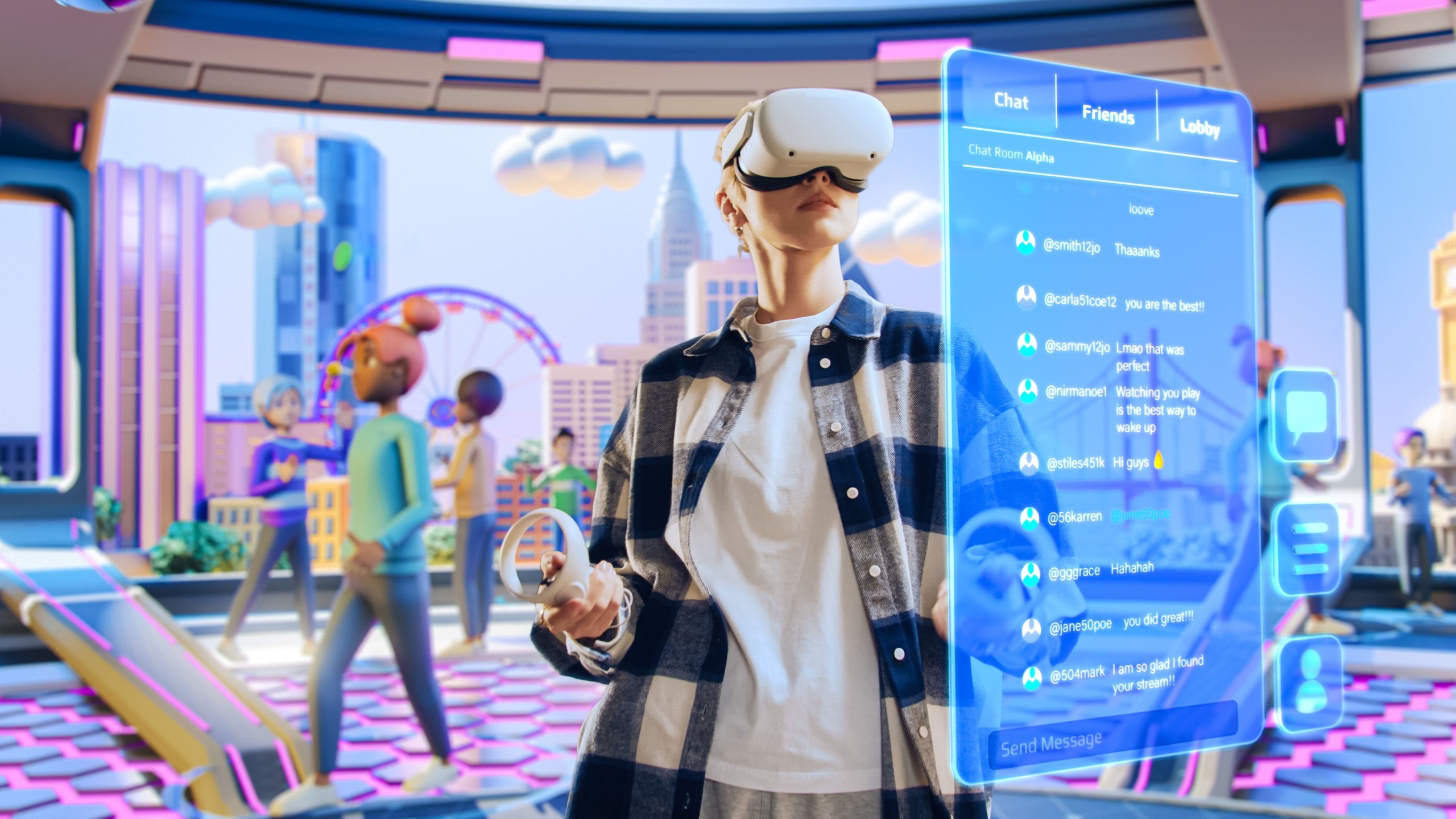
“The Metaverse Really Affect Business …” from bernardmarr.com and used with no modifications.
The traditional internet is primarily a 2D experience – we browse flat web pages, scroll through social media feeds, and interact with content through clicks and taps. The metaverse transforms this into a spatial experience where information exists in three-dimensional space. Rather than reading about a historical event, for example, you might walk through a recreation of it, observing details from any angle and interacting with elements in a way that mimics physical reality.
This shift from observation to embodiment represents a profound change in how information is absorbed and processed. Studies in educational psychology have consistently shown that immersive, interactive learning experiences lead to better retention and understanding than passive consumption of information. The metaverse leverages this principle by creating environments where users don’t just access information – they experience it through multiple senses simultaneously.
Persistence: A World That Continues Without You

“A New Era of Immersive Virtual Reality” from www.qualitestgroup.com and used with no modifications.
Unlike websites that only exist when you’re viewing them, the metaverse is characterized by persistence – virtual worlds continue to exist and evolve even when individual users log off. This fundamental property creates experiences that feel more like visiting real places than consuming media. When you return to a metaverse environment, changes made by others while you were away remain visible, creating a sense of shared reality and ongoing narrative.
This persistence enables complex social and economic systems to develop organically within virtual spaces. Communities form, economies fluctuate, and environments evolve through collective action rather than centralized design. The emergent behaviors and structures that arise from persistent virtual worlds represent one of the most fascinating aspects of the metaverse, mirroring how physical societies develop but with fewer physical constraints.
How Major Companies Define the Metaverse
Different technology leaders have developed distinct visions for what the metaverse should be, resulting in various approaches to building this next generation of digital experience. Understanding these different perspectives helps clarify where the technology is heading and the competing priorities shaping its evolution.
Meta’s Vision: Social Connection in Virtual Space
Meta (formerly Facebook) has positioned its metaverse vision primarily around social connection, emphasizing avatar-based interactions in virtual spaces. Their platforms like Horizon Worlds and Horizon Workrooms focus on creating shared experiences where users can gather, interact, and collaborate regardless of physical location. This approach prioritizes presence and communication, with CEO Mark Zuckerberg describing the metaverse as an “embodied internet” where you’re in the experience, not just looking at it.
Meta’s massive investment in Reality Labs (over $36 billion since 2019) demonstrates their commitment to building hardware and software infrastructure for metaverse adoption. Their strategy includes developing more affordable and comfortable VR headsets, creating realistic avatars with expressive capabilities, and building tools that allow users to create their own virtual environments and experiences without specialized technical skills.
Microsoft’s Approach: Productivity and Enterprise Solutions
Microsoft has focused its metaverse strategy primarily on enterprise applications, particularly through its Microsoft Mesh platform and HoloLens mixed reality headset. Rather than creating consumer social spaces, Microsoft emphasizes how mixed reality can enhance productivity, training, and remote collaboration for businesses. Their “industrial metaverse” concept focuses on digital twins of physical systems, virtual training environments, and enhanced remote presence for specialized work.
For more insights into how digital strategies can transform business operations, check out this comprehensive guide to search engines.
Microsoft’s acquisition of Activision Blizzard signals an expanded vision that may integrate gaming more deeply with productivity and social experiences. CEO Satya Nadella has articulated a metaverse concept where the digital and physical worlds converge, with AI serving as a bridge between them. This approach positions the metaverse as an evolution of existing tools rather than an entirely separate digital realm.
Gaming Platforms: Roblox, Fortnite, and Minecraft
Gaming platforms represent some of the most developed metaverse environments currently accessible. Roblox, with over 66 million daily active users, provides tools for users to create and monetize their own games and experiences within a shared platform. The company explicitly describes itself as building toward the metaverse, focusing on user-generated content, virtual economy, and social interaction.
Epic Games’ Fortnite has evolved from a battle royale game into a platform for concerts, movie promotions, and social gatherings that attract millions of concurrent participants. Minecraft, owned by Microsoft, continues to serve as a creative platform where users build elaborate worlds collaboratively. These gaming platforms demonstrate how engaging content, creation tools, and social features combine to create compelling metaverse experiences that users return to regularly.
Real Applications of the Metaverse Today
While the fully realized metaverse remains a future vision, practical applications already exist across multiple industries, demonstrating the technology’s potential even in its early stages. These current use cases provide insight into how the metaverse might transform various aspects of business and daily life.
Virtual Concerts and Entertainment
The entertainment industry has been quick to explore metaverse opportunities, particularly through virtual concerts and events. Travis Scott’s Fortnite concert attracted over 12 million concurrent viewers, while Lil Nas X’s performance on Roblox drew 33 million views. These events go beyond simple video streaming to create interactive experiences where attendees can affect the environment, interact with other fans, and experience performances from perspectives impossible in physical venues.
Beyond music, film studios and entertainment companies are creating interactive experiences tied to major releases. Warner Bros. created a Wonder Woman experience in Roblox, while Disney has partnered with Fortnite for Star Wars and Marvel tie-ins. These approaches represent early explorations of how storytelling and audience engagement might evolve in metaverse environments.
Digital Real Estate and Commerce
Virtual land sales in platforms like Decentraland and The Sandbox have created entirely new markets for digital real estate. Companies like PwC, Samsung, and Adidas have purchased virtual land to establish brand presence in these emerging platforms. This digital real estate serves various functions, from hosting virtual stores and brand experiences to providing space for events and advertising.
Retail brands are experimenting with virtual stores where shoppers can browse products in 3D environments, try virtual versions of physical products, and make purchases that are delivered physically. Luxury brands including Gucci, Balenciaga, and Burberry have created limited edition digital items and experiences, recognizing the growing value consumers place on digital representation and status symbols.
Remote Work and Collaboration
The pandemic accelerated interest in virtual work environments, with companies like Accenture creating entire virtual offices where employees can gather, collaborate, and socialize regardless of physical location. These spaces go beyond video conferencing to create persistent environments where work materials remain in place between sessions and spatial audio allows for more natural group interactions.
Training and simulation represent particularly valuable enterprise applications, with companies using VR and AR to create realistic practice environments for everything from surgical procedures to equipment maintenance. These applications demonstrate measurable improvements in training outcomes while reducing costs associated with physical facilities and equipment.
Education and Training Simulations
Educational institutions are exploring how immersive environments can transform learning experiences. Virtual field trips allow students to visit historical sites, explore biological systems from within, or travel to inaccessible locations like space or ocean depths. Medical schools use VR simulations for anatomy lessons and surgical training, while engineering programs create virtual labs where students can experiment without material costs or safety concerns.
For more information on how these technologies are evolving, you can read this comprehensive guide to search engines.
Corporate training has emerged as a particularly effective application, with studies showing VR training can lead to 75% higher knowledge retention compared to traditional methods. Companies like Walmart, UPS, and Boeing have implemented VR training programs for tasks ranging from customer service to equipment operation, reporting significant improvements in employee performance and confidence.
Challenges Standing in the Way
Despite rapid advancement and investment, several significant challenges must be addressed before the metaverse can achieve mainstream adoption. Understanding these barriers helps contextualize current limitations and the timeline for broader implementation.
For those interested in exploring related digital opportunities, consider delving into affiliate marketing tips and strategies to make money in this evolving landscape.
Interoperability Between Platforms
One of the most significant challenges facing metaverse development is the lack of standardization and interoperability between different platforms and environments. Currently, assets, identities, and experiences created in one virtual world typically cannot transfer to another, creating fragmented experiences rather than a cohesive metaverse. This limitation contradicts the vision of a seamless digital universe where users can move freely between different spaces while maintaining consistent identity and possessions.
- Technical challenges include different rendering systems, physics engines, and data formats
- Commercial barriers exist as platforms compete for user attention and spending
- Governance questions about who sets standards and how they’re enforced remain unresolved
- Security concerns around transferring assets between environments with different security models
Industry groups like the Metaverse Standards Forum, which includes Meta, Microsoft, Epic Games and others, are working to develop common standards and protocols. Their efforts focus on creating technical frameworks for interoperability while respecting the unique characteristics of different platforms. Progress in this area will determine whether the metaverse evolves as an open ecosystem similar to the web or remains a collection of walled gardens.
Blockchain technology offers potential solutions through decentralized identity systems and transferable digital assets, but integration with traditional platforms remains challenging. The tension between open standards and proprietary systems will likely define metaverse development for years to come, with significant implications for users, creators, and businesses invested in the space.
Digital Divide and Accessibility Issues
The hardware requirements for full metaverse participation create significant accessibility barriers. Quality VR headsets remain expensive (ranging from $300-$3,500), require powerful computing systems, and can cause physical discomfort with extended use. These limitations concentrate metaverse access among wealthier populations and tech enthusiasts, potentially exacerbating existing digital divides unless deliberately addressed through more accessible technologies and experiences.
Privacy and Security Concerns
The immersive nature of metaverse experiences creates new privacy and security challenges beyond those of traditional internet platforms. VR and AR devices collect unprecedented amounts of biometric data, including eye movements, facial expressions, voice patterns, and even room mapping of private spaces. This data collection raises questions about surveillance, consent, and the potential for more sophisticated targeted advertising and manipulation.
Identity protection in virtual spaces introduces additional complexities, as realistic avatars and persistent identities blur the line between online and offline presence. Harassment and harmful behavior take new forms in immersive environments, where actions can feel more personally intrusive than on traditional social media. Companies are developing moderation tools and personal boundary systems, but governance models for 3D social spaces remain experimental.
Security challenges extend to virtual assets and economies, particularly as these gain real-world value. Protecting against theft, fraud, and exploitation becomes increasingly important as users invest time and money in building metaverse identities and possessions. These concerns will require new approaches to security that balance protection with usability in immersive contexts.
The Future of the Metaverse: What’s Next?
The metaverse’s evolution will likely follow a gradual integration pattern rather than a sudden emergence. We’re currently in what many analysts consider the early adoption and infrastructure-building phase, with specialized applications demonstrating value while broader platforms continue development. The coming years will likely see increasing convergence between existing technologies and growing integration of metaverse elements into everyday digital experiences.
Timeline for Mainstream Adoption
Industry analysts offer varying predictions for metaverse adoption timelines, but most suggest a 5-10 year horizon for widespread implementation of key technologies and use cases. The next 2-3 years will likely focus on hardware improvements, particularly more comfortable and affordable VR/AR devices that remove current barriers to entry. By mid-decade, we can expect more seamless integration between physical and digital experiences, with AR glasses potentially becoming mainstream consumer products.
Full realization of the interconnected metaverse vision may take a decade or more, requiring advances in network infrastructure, computing power, and industry standards. This gradual evolution allows time for societal adaptation, regulatory frameworks, and ethical considerations to develop alongside the technology, potentially avoiding some of the pitfalls experienced during earlier internet and social media adoption.
How to Participate in the Early Metaverse
For those interested in experiencing current metaverse platforms, entry points exist at various levels of investment and technical sophistication. Web-based platforms like Decentraland and Cryptovoxels are accessible through standard browsers, while gaming platforms like Roblox, Fortnite, and Minecraft offer metaverse-like experiences on conventional computers and consoles. For more immersive experiences, consumer VR headsets like Meta Quest provide access to social platforms like Horizon Worlds, VRChat, and Rec Room where users can socialize and create in fully immersive environments.
Frequently Asked Questions
As the metaverse concept continues to evolve, many people have fundamental questions about what it means for them personally and professionally. These common questions help clarify misconceptions and provide practical understanding of current metaverse realities.
Do I need VR headsets to access the metaverse?
While virtual reality provides the most immersive metaverse experience, it’s not a requirement for participation. Many current metaverse platforms are accessible through standard computers, smartphones, and gaming consoles. Companies are developing multiple entry points to ensure broader accessibility, from high-end VR for full immersion to mobile apps for casual engagement. As the technology evolves, the lines between different access methods will likely blur, with AR glasses potentially providing a middle ground between full immersion and conventional screens.
Is the metaverse just for gaming?
Gaming represents an important component of the metaverse but doesn’t define its full scope. While game engines provide much of the technical foundation for 3D virtual worlds, metaverse applications extend to education, healthcare, retail, workplace collaboration, social connection, and creative expression. The distinguishing factor is the focus on persistent, shared virtual environments rather than isolated gaming experiences. As development continues, the boundary between games and other virtual experiences may become increasingly fluid, with game-like elements incorporated into serious applications and vice versa.
How is cryptocurrency connected to the metaverse?
Cryptocurrency and blockchain technology provide infrastructure for ownership, transactions, and governance within metaverse environments. Digital tokens enable verifiable ownership of virtual assets like land, avatars, and collectibles, while cryptocurrencies facilitate commerce within and between virtual worlds. Blockchain can also support decentralized identity systems that allow users to maintain consistent identities across different platforms.
However, not all metaverse visions rely equally on cryptocurrency. Some platforms use traditional payment systems and centralized databases rather than blockchain technology. The relationship between cryptocurrency and the metaverse continues to evolve, with different approaches emerging based on priorities around decentralization, accessibility, and economic models.
Can I make money in the metaverse?
Various economic opportunities exist within current metaverse platforms, from creating and selling virtual goods to providing services and experiences. Content creators design everything from avatar accessories to entire environments, while event organizers, educators, and entertainers offer experiences that attract participants. Some platforms implement play-to-earn mechanics where users receive cryptocurrency rewards for participation and contribution.
For those interested in exploring other ways to earn, affiliate marketing tips can provide additional strategies to make money online.
Professional opportunities related to metaverse development continue to grow, with increasing demand for 3D designers, developers, virtual architects, experience designers, and community managers. Major companies across industries are establishing metaverse teams to explore opportunities and develop strategies, creating new career paths for those with relevant skills.
Real estate speculation has emerged as another economic activity, with investors purchasing virtual land in anticipation of value appreciation as platforms grow. While some early investors have realized significant returns, the volatility and uncertainty of these markets make them highly speculative investments.
As with any emerging economy, metaverse opportunities come with significant risks and uncertainties. The landscape continues to evolve rapidly, with new platforms emerging and existing ones adapting to changing conditions. Those interested in metaverse economics should approach with careful research and risk management appropriate to experimental markets.
- Content creation: Designing virtual assets, environments, and experiences
- Services: Virtual event planning, education, entertainment, and consulting
- Development: Building applications, games, and tools for metaverse platforms
- Investment: Trading virtual real estate, collectibles, and platform-specific currencies
- Marketing: Helping brands establish presence and engage with audiences in virtual spaces
Will the metaverse replace social media?
Rather than replacing social media entirely, the metaverse is more likely to represent its spatial evolution. Current social platforms are already incorporating 3D elements, while metaverse environments add communication features familiar from social media. This convergence suggests a future where the distinction between social media and metaverse platforms becomes increasingly blurred, with users moving fluidly between different levels of immersion based on context and preference.
The social dynamics of metaverse environments differ significantly from traditional social media, emphasizing synchronous presence over asynchronous posting and commenting. This shift creates more immediate, embodied interactions that more closely resemble physical social experiences. The sense of shared space and co-presence can create stronger feelings of connection than text and image-based platforms, potentially addressing some of the isolation issues associated with conventional social media.
As the technology continues to evolve, we’re likely to see a spectrum of social platforms ranging from text-based to fully immersive, with users engaging across multiple formats based on their needs, preferences, and situations. The metaverse will expand our social options rather than narrowing them to a single model of interaction.
For more insights into emerging technologies and how they’re reshaping business landscapes, explore Market Business Watch’s coverage of fintech, AI tools, and digital transformation trends that are defining tomorrow’s opportunities.
The metaverse is a collective virtual shared space, created by the convergence of virtually enhanced physical reality and physically persistent virtual space, including the sum of all virtual worlds, augmented reality, and the Internet. It is a concept that has been gaining traction in recent years, with many companies and individuals exploring its potential applications. To understand how the metaverse fits into the digital landscape, it’s important to explore how it intersects with search engines and other online platforms.

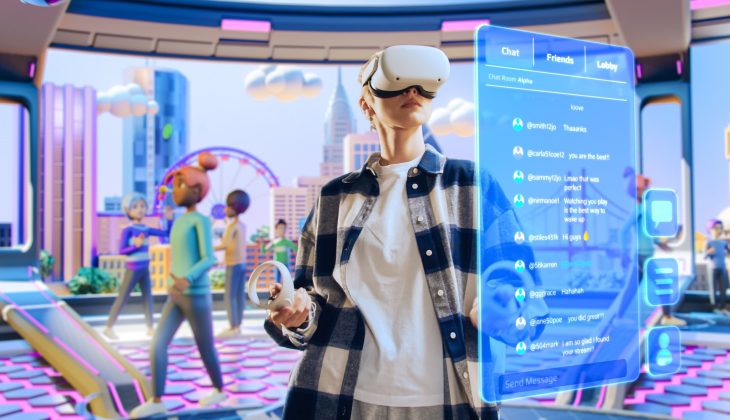
Join the Conversation